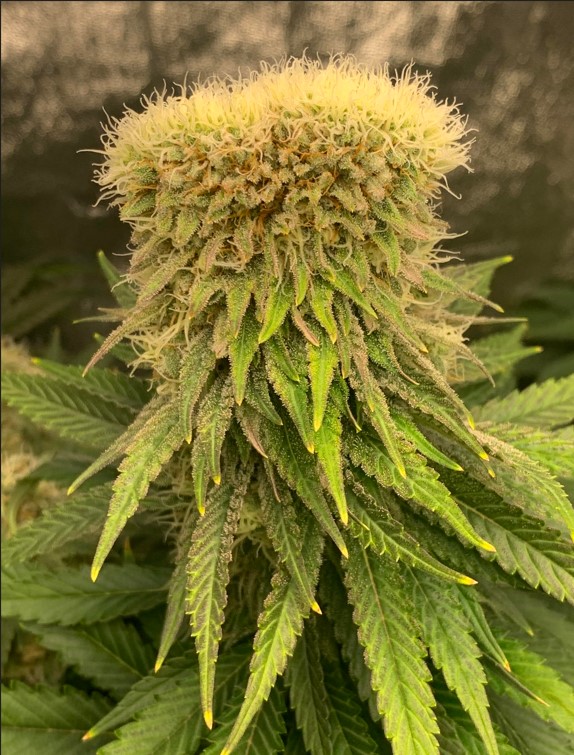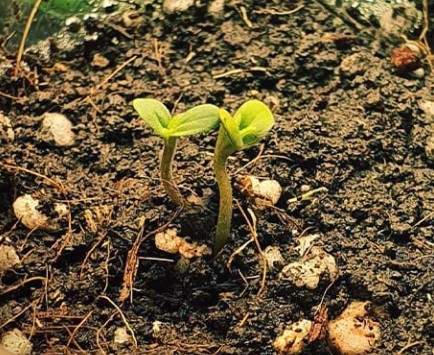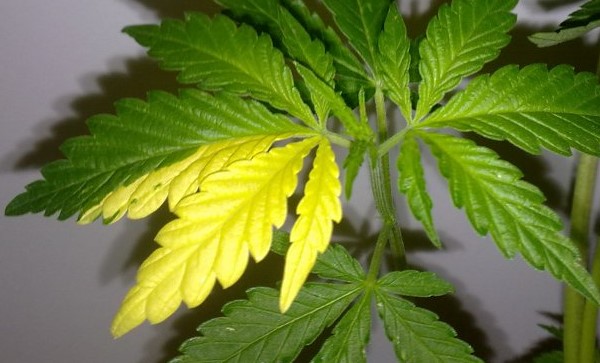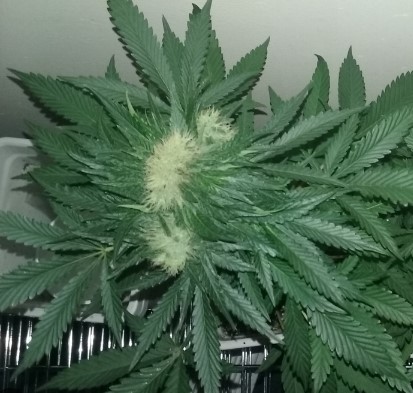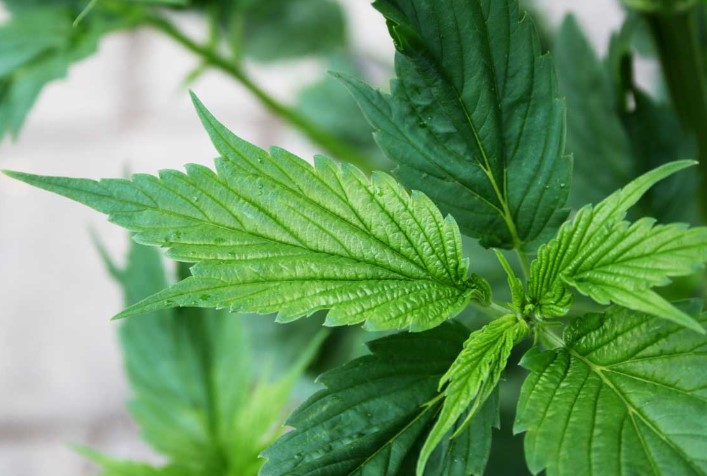There are several types of mutations that can occur in cannabis plants, including:
- Spontaneous mutations – These occur naturally and can result in plants with unique characteristics, such as altered growth patterns or changes in color.
- Induced mutations – These are caused by external factors, such as exposure to radiation or chemicals.
- Genetic mutations – These are caused by changes in the DNA of the plant, and can result in new strains with specific characteristics.
- Polyploidy – This is a type of genetic mutation that results in the plant having more than the typical number of chromosomes, which can lead to increased size and vigor.
- Chloroplast Mutations – This type of mutation affects the chloroplasts of the plant, causing changes in the color of the leaves or flowers.
- Mitochondrial Mutations – This type of mutation affects the mitochondria of the plant and can have an impact on the plant’s energy metabolism.
- Autotrophic Mutations – This type of mutation affects the plant’s ability to produce its own food through photosynthesis, which can lead to changes in growth patterns or color.
- Polyembryonic Seeds – Refers to seeds that contain more than one embryo
- Variegation in cannabis – a condition where the leaves of the plant have different colors
- Whorled Phyllotaxy in cannabis – refers to a condition where the leaves of the plant are arranged in a circular or spiral pattern
- Australian Bastard Cannabis – a subspecies of the cannabis plant, and is known for its small size, short stature, and ability to grow in harsh environmental conditions
- Ducksfoot Cannabis – a variety of cannabis that is known for its unique leaf shape, which resembles the webbed foot of a duck.
1. Spontaneous Mutations in cannabis
Spontaneous mutation in cannabis refers to a type of genetic variation that occurs naturally within a population of plants. These mutations can occur for a variety of reasons, including errors in DNA replication, exposure to environmental factors such as radiation or chemicals, or as a result of natural processes like crossing over or recombination during meiosis.
Spontaneous mutations can result in a wide range of changes to the plant, including changes in growth patterns, changes in color, or changes in the plant’s cannabinoid and terpene profiles. Some of these mutations can be beneficial to the plant, such as those that make the plant more resistant to pests or disease, while others may be detrimental.
In the context of cannabis breeding and cultivation, spontaneous mutations are often considered to be a source of genetic diversity and can be used to create new strains or varieties of plants with unique characteristics. Some seed bank companies use spontaneous mutations to create new cultivars.
2. Induced Mutations in Cannabis
Induced mutations in cannabis refer to genetic variations that are caused by external factors, such as exposure to radiation or chemicals. These mutations are the result of intentional or accidental manipulation of the plant’s DNA.
One way to induce mutations in cannabis is by exposing the plant to ionizing radiation such as gamma rays, X-rays, or ultraviolet (UV) light. This can cause random changes in the DNA of the plant, resulting in new and unique characteristics.
Another way to induce mutations in cannabis is by using chemicals such as ethyl methanesulfonate (EMS) or nitrosoguanidine (NTG). These chemicals are mutagenic agents that can cause changes in the DNA of the plant.
Induced mutations can result in a wide range of changes to the plant, including changes in growth patterns, changes in color, or changes in the plant’s cannabinoid and terpene profiles. Similar to spontaneous mutations, some of these mutations can be beneficial to the plant, such as those that make the plant more resistant to pests or disease, while others may be detrimental.
Induced mutations are used in the breeding and cultivation of cannabis to create new strains or varieties of the plant with unique characteristics. This is often called mutation breeding, and it helps to create new cultivars with specific traits such as disease resistance, or higher yield.
3. Genetic Mutations in Cannabis
Genetic mutations in cannabis refer to changes in the DNA of the plant that result in new and unique characteristics. These mutations can occur naturally, through spontaneous mutations, or through induced mutations, as a result of exposure to radiation or chemicals.
Genetic mutations can result in a wide range of changes to the plant, including changes in growth patterns, changes in color, or changes in the plant’s cannabinoid and terpene profiles. Some genetic mutations can be beneficial to the plant, such as those that make the plant more resistant to pests or disease, while others may be detrimental.
In the context of cannabis breeding and cultivation, genetic mutations are often used to create new strains or varieties of the plant with unique characteristics. These new strains can have different flavors, aromas, potencies, and growth habits. Genetic mutations can also be used to stabilize certain traits in a cultivar, such as a specific cannabinoid profile or a particular terpene content.
Genetic mutations can also be used to create new cultivars that are more resistant to pests, diseases, or environmental conditions. This can help increase the yield and quality of the crop, and can also reduce the need for pesticides or other chemicals.
It is important to note that genetic mutations can also cause genetic diseases, such as cancer, and in the case of cannabis, it can lead to lower yields, or to plants that are more susceptible to diseases or pests. Therefore, it is important for breeders and cultivators to carefully evaluate the potential risks and benefits of genetic mutations before introducing them into a breeding or cultivation program.
4. Polyploidy Mutation in Cannabis
Polyploidy is a type of genetic mutation in cannabis that results in the plant having more than the typical number of chromosomes. In cannabis, the normal diploid number of chromosomes is 18 (9 pairs) but in polyploid plants, the number of chromosomes can be more than twice that number. This can lead to increased size and vigor in the plant.
Some of the common characteristics of polyploid cannabis plants include larger leaves, stems, and flowers. They also tend to have thicker cell walls which can make them more resistant to pests and diseases. The increased number of chromosomes can also lead to increased yields, as well as changes in the plant’s cannabinoid and terpene profiles.
Polyploidy can occur naturally, but it can also be induced through the use of chemicals such as colchicine or oryzalin. It is important to note that inducing polyploidy can also cause genetic instability and can lead to other mutations.
In the context of cannabis breeding and cultivation, polyploidy is often used to create new strains or varieties of the plant with unique characteristics. However, it is important to consider the potential risks and benefits of using polyploid plants, as they may have reduced fertility and may not be able to produce viable seeds.
5. Chloroplast Mutations in Cannabis
A Chloroplast mutation in cannabis is a genetic variation that affects the chloroplasts of the plant, which are organelles found in the cells of plants that are responsible for photosynthesis. Chloroplasts contain chlorophyll, the pigment that gives plants their green color and allows them to absorb light for photosynthesis.
Chloroplast mutations can cause changes in the color of the leaves or flowers of the plant. For example, a mutation that affects the chlorophyll content of the chloroplasts can result in a plant with leaves that are a different color, such as yellow or white.
Chloroplast mutations can occur naturally, but they can also be induced through the use of chemicals or radiation. In some cases, the mutations can be beneficial, such as those that make the plant more resistant to pests or diseases, or those that result in a plant with a unique color. However, in other cases, the mutations can be detrimental and can lead to reduced photosynthesis and lower yields.
In the context of cannabis breeding and cultivation, chloroplast mutations can be used to create new strains or varieties of the plant with unique characteristics, such as different leaf colors, or unique aesthetics.
6. Mitochondrial Mutations in Cannabis
Mitochondrial mutations in cannabis are genetic variations that affect the mitochondria of the plant, which are organelles found in the cells of plants that are responsible for generating energy for the cell. Mitochondria have their own genetic material, called mitochondrial DNA (mtDNA), which is separate from the DNA found in the nucleus of the cell.
Mitochondrial mutations can have an impact on the plant’s energy metabolism, which can lead to changes in the plant’s growth patterns or color. For example, a mutation that affects the mtDNA of the mitochondria can cause the plant to have reduced energy levels, which can lead to stunted growth or a reduction in the number of flowers or fruits.
Mitochondrial mutations can occur naturally, but they can also be induced through the use of chemicals or radiation. In some cases, the mutations can be beneficial, such as those that make the plant more resistant to pests or diseases, while in other cases, the mutations can be detrimental and can lead to reduced growth and lower yields.
In the context of cannabis breeding and cultivation, mitochondrial mutations are not commonly used to create new strains or varieties of the plant with unique characteristics, as they can often have a negative impact on the plant’s growth and yield. However, some breeders may use them to create strains with unique characteristics or specific traits.
It is important to note that the study of mitochondrial mutations in cannabis is not as common as other types of mutations, and more research is needed to fully understand their impact on the plant’s growth and development.
7. Autotrophic Mutations in Cannabis
Autotrophic mutations in cannabis refer to genetic variations that affect the plant’s ability to produce its own food through photosynthesis. Photosynthesis is the process by which plants use energy from the sun, carbon dioxide from the air, and water from the soil to produce glucose (a type of sugar) and oxygen. This process is essential for the growth and survival of plants.
Autotrophic mutations can cause changes in the plant’s growth patterns or color, as well as changes in the plant’s ability to produce its own food. For example, a mutation that affects the chloroplasts, which are responsible for photosynthesis, can cause the plant to have reduced energy levels, which can lead to stunted growth or a reduction in the number of flowers or fruits.
Autotrophic mutations can occur naturally, but they can also be induced through the use of chemicals or radiation. In some cases, the mutations can be beneficial, such as those that make the plant more resistant to pests or diseases, while in other cases, the mutations can be detrimental and can lead to reduced growth and lower yields.
In the context of cannabis breeding and cultivation, autotrophic mutations are not commonly used to create new strains or varieties of the plant with unique characteristics, as they can often have a negative impact on the plant’s growth and yield. However, some breeders may use them to create strains with unique characteristics or specific traits.
It is important to note that the study of autotrophic mutations in cannabis is not as common as other types of mutations, and more research is needed to fully understand their impact on the plant’s growth and development.
8. Polyembryonic Seeds
Polyembryonic seeds in cannabis refer to seeds that contain more than one embryo, which can result in multiple plants growing from a single seed. This type of seed is relatively rare in cannabis, but when it does occur, it can lead to multiple seedlings growing from one seed.
The reason behind the formation of polyembryonic seeds is not well understood, but it is thought to be caused by a genetic mutation or an abnormal growth pattern during seed development. These seeds are often found in some tropical plants and fruit trees, such as citrus.
When planted, polyembryonic seeds can produce multiple seedlings, each with its own root system. This can be beneficial for growers, as it can lead to multiple plants growing from a single seed, which can increase the yield of a crop. However, it also can be a problem if the seedlings are not separated early enough, as they may compete for nutrients, light, and water.
In the context of cannabis breeding and cultivation, polyembryonic seeds are not commonly used to create new strains or varieties of the plant with unique characteristics, as they are relatively rare in cannabis. However, some breeders may use them to create strains with unique characteristics or specific traits.
It is important to note that proper care should be taken when planting polyembryonic seeds, as multiple seedlings can require more space, light, water, and nutrients than a single seedling.
9. Variegation in cannabis
This refers to a condition where the leaves of the plant have different colors, usually due to a genetic mutation that affects the way chlorophyll is produced or distributed in the plant. Chlorophyll is the pigment that gives plants their green color and allows them to absorb light for photosynthesis.
The most common type of variegation in cannabis is when the leaves have white or yellow patches on them, which are caused by a lack of chlorophyll in those areas. This can happen due to a mutation in the genes that control chlorophyll synthesis or chloroplast development.
Variegation can also occur when the plant is exposed to environmental stressors such as extreme temperatures, lack of light or water, or exposure to certain chemicals.
Variegated cannabis plants can have unique aesthetics and can be used to create new strains or varieties of the plant with unique characteristics. However, variegation can also have a negative impact on the plant’s growth and yield, as the leaves with a lack of chlorophyll will not be able to photosynthesize as efficiently.
It is important to note that most variegated cannabis plants are not stable and can revert to a non-variegated form over time. This can happen due to genetic instability in the plant.
10. Whorled Phyllotaxy Mutation in Cannabis
Whorled phyllotaxy in cannabis refers to a condition where the leaves of the plant are arranged in a circular or spiral pattern around the stem, rather than the typical opposite or alternate pattern. This is due to a genetic mutation that affects the way the leaves are formed and arranged on the stem.
In cannabis, the typical phyllotaxy is the opposite, which means that the leaves are arranged in pairs on opposite sides of the stem. However, in plants with whorled phyllotaxy, the leaves are arranged in a circular pattern around the stem. This can lead to a unique appearance of the plant, and can also affect the plant’s growth and development.
Whorled phyllotaxy can have a negative impact on the plant’s growth and yield, as the leaves may be too close together, which can lead to competition for light and nutrients. This can also lead to reduced photosynthesis, which can affect the plant’s growth and development.
In the context of cannabis breeding and cultivation, whorled phyllotaxy is not commonly used to create new strains or varieties of the plant with unique characteristics, as it can have a negative impact on the plant’s growth and yield. However, some breeders may use it to create strains with unique characteristics or specific traits.
It is important to note that the study of whorled phyllotaxy in cannabis is not as common as other types of mutations, and more research is needed to fully understand their impact on the plant’s growth and development.
11. Australian Bastard Cannabis
Australian Bastard Cannabis, also known as Australian Ruderalis, is a variety of cannabis that is native to Australia and is believed to be a naturally occurring hybrid of Cannabis sativa and Cannabis indica. It is considered to be a subspecies of the cannabis plant, and is known for its small size, short stature, and ability to grow in harsh environmental conditions such as high temperatures and low rainfall.
Australian Bastard Cannabis has been long considered to be of lower value than other cannabis varieties, as it typically has a lower THC content (the psychoactive compound in cannabis) and is not as well suited for recreational or medicinal use. However, it is known to be hardy, and it can grow well in hot, dry climates.
Recently, Australian Bastard Cannabis has been used in breeding programs to create new strains that are better suited to harsh climates and can grow in a variety of different regions. Its hardiness and natural resistance to pests and diseases also make it a useful plant for growers looking to cultivate cannabis in regions with harsh climates.
12. Ducksfoot Cannabis
Ducksfoot Cannabis, also known as “Duckfoot” or “Duck’s Foot,” is a variety of cannabis that is known for its unique leaf shape, which resembles the webbed foot of a duck. The leaves of this variety of cannabis are generally wider at the base and taper to a point at the tip, with five or fewer fingers.
Ducksfoot Cannabis is a rare strain and it is believed to be a naturally occurring genetic mutation of the cannabis plant. It is considered to be a subspecies of the cannabis plant and is known for its small size, short stature, and ability to grow in harsh environmental conditions such as high temperatures and low rainfall.
Ducksfoot Cannabis is not well known for its THC content (the psychoactive compound in cannabis) and it is not commonly used for recreational or medicinal use. However, it is known to be hardy and it can grow well in hot, dry climates.
Recently, Ducksfoot Cannabis has been used in breeding programs to create new strains that are better suited to harsh climates and can grow in a variety of different regions. Its hardiness and natural resistance to pests and diseases also make it a useful plant for growers looking to cultivate cannabis in regions with harsh climates.


